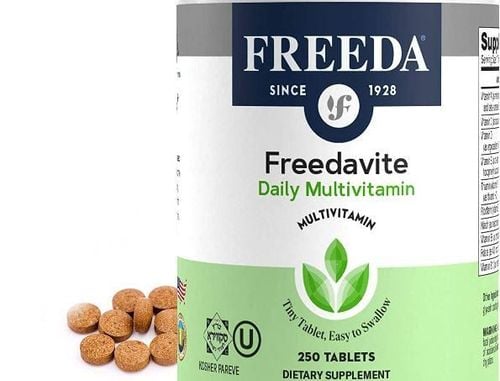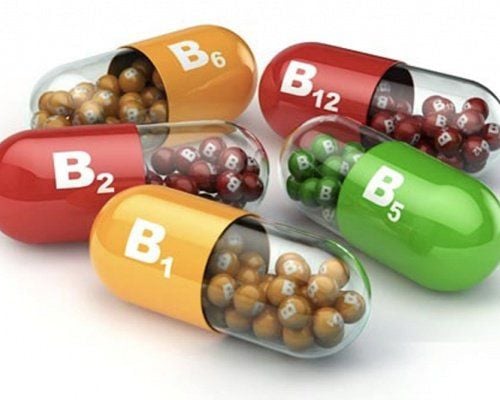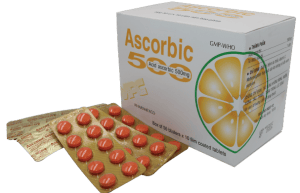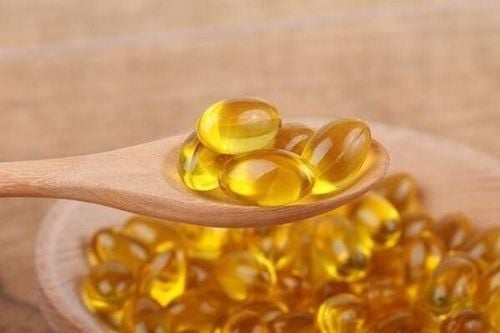This is an automatically translated article.
Micronutrients are known to be one of the main groups of substances that our body needs. These include vitamins and minerals. So what is the most reasonable and correct way to supplement micronutrients?
1. What are micronutrients?
Micronutrients, commonly known as vitamins and minerals, are essential for healthy growth and disease prevention. With the exception of vitamin D, the micronutrients are not produced in the body and must be obtained from the diet.
Although each person only needs a small amount of micronutrients, it is very important to consume the recommended amount. Micronutrient deficiencies can have serious consequences. At least half of children under the age of 5 worldwide have vitamin and mineral deficiencies.
Humans must obtain micronutrients from food because the body cannot produce vitamins and minerals. Depending on their function, some micronutrients also have a role in preventing and fighting disease.
2. Types and functions of micronutrients
Regardless of the type, vitamins and minerals are absorbed in similar ways in the body and in many processes.
Most vitamins are water soluble so they are called water soluble vitamins. They are not easily stored in the body and are excreted in the urine when consumed in excess. Although each water-soluble vitamin has a specific role to play, their functions are interrelated.
2.1. Water-soluble vitamins with several functions Vitamin B1 : Helps convert nutrients into energy. Vitamin B2: Helps with energy production, cell function and fat metabolism. Vitamin B3: Has a rapid-promoting effect for energy production from dietary supplements. Vitamin B5: This is a multivitamin with fatty acids. Vitamin B6: Helps your body release sugar from stored carbohydrates for energy and to make red blood cells in the blood. Vitamin B7: Plays a role in the metabolism of fatty acids, amino acids and glucose. Vitamin B9: Important for proper cell division. Vitamin B12: Necessary for red blood cell formation, nervous system and proper brain function. Vitamin C: This is the vitamin that makes the main neurotransmitters, proteins, and collagen in your skin.
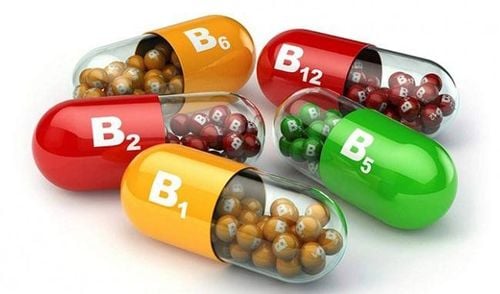
Vitamin nhóm B đóng vai trò quan trọng với cơ thể con người
2.2. Fat-soluble vitamin Vitamin A: Necessary for vision and organ function. Vitamin D: This is a vitamin with immune effects and calcium absorption to help stimulate bone development. Vitamin E: helps with antioxidants to protect cells from damage and create immunity. Vitamin K: helps the blood clotting process to form well. 2.3. The trace mineral Iron: Helps deliver oxygen to muscles and aids in the production of certain hormones. Manganese: Supports carbohydrate, amino acid and cholesterol metabolism. Copper: helps the brain to develop and the nervous system to form well. Zinc: Provides good wound healing and effective immune function formation. Iodine: Supports thyroid regulation. Fluoride: An essential and maintenance substance for the body's bones and teeth.
3. Signs of micronutrient deficiency in children
The following signs indicate that the child is lacking in micronutrients:
The child's weight is slowly increasing, the height is underdeveloped The child is often sick: prolonged nasopharyngitis, recurrent diarrhea Children's hair falls out, at night often fussy, sweaty Pale skin, brittle nails, dry hair easy to fall Bones aching, bones may be deformed.

Trẻ bị rụng tóc là dấu hiệu của thiếu vi chất dinh dưỡng
4. How to properly supplement micronutrients
4.1. Adequate intake of water-soluble vitamins Vitamin B1: Whole grains, meat, fish supplements 1.1–1.2 mg. Vitamin B2: Organ meats, eggs, fortified milk from 1.1 to 1.3 mg. Vitamin B3: Meat, salmon, green leafy vegetables, beans 14–16 mg. Vitamin B5: Organ meats, mushrooms, tuna, avocados added from 5 mg. Vitamin B6: Fish, milk, carrots, potatoes supplement from 1.3 mg. Vitamin B7: Eggs, almonds, spinach, sweet potatoes from 30 mcg. Vitamin B9: Beef, liver, black-eyed peas, spinach, asparagus supplement from 400 mg. Vitamin B12: Clam, fish, meat supplement from 2.4 mcg. Vitamin C: Citrus fruits, bell peppers, Brussels sprouts 75–90 mg. 4.2. Food sources and recommendations for fat-soluble vitamins Vitamin A: Retinol (liver, milk, fish), carotenoids (sweet potatoes, carrots, spinach) 700-900 mcg. Vitamin D: Sunlight, fish oil, fortified milk from 600–800 IU. Vitamin E: Sunflower seeds, wheat germ, almonds supplement from 15 mg. Vitamin K: Green leafy vegetables, soybeans, and squash add from 90–120 mcg.
4.3. Recommended dietary sources and trace minerals Iron: found in fortified foods Oysters, white beans, spinach from 8–18 mg Manganese: found in foods Pineapple, pecans, peanuts fortified from 1.8–2.3 mg Copper: found in liver foods, crabs, cashews supplemented from 900 mcg Zinc: found in oysters, crabs, chickpeas supplemented from 8-11 mg Iodine: found in foods seaweed products, cod, yogurt fortified with 150 mcg Fluoride: found in foods, juices, water, fortified crabs 3–4 mg

Kẽm có chứa trong một số loại thực phẩm có sẵn trong tự nhiên
5. Health benefits of micronutrients
When you are active all micronutrients are extremely important. Tolerance to consume the right amount of vitamins and minerals for the body is a good tool as a key to good health and fighting disease.
In the body's vitamins and minerals they act as an antioxidant. This substance has a protective effect on your own body and fights against cells associated with diseases such as cancer, heart disease, Alzheimer's disease.
For example, research has linked a diet full of vitamins A and C with a reduced risk of certain types of cancer. A review of seven studies found that a diet full of vitamins E, C, and A was associated with a 24%, 17%, and 12% reduced risk of developing Alzheimer's disease, respectively.
6. Prevention of micronutrient deficiency
6.1. Taking micronutrient supplements To prevent signs of micronutrient deficiency in children, every year children take vitamin A supplements, which are deployed nationwide by the Ministry of Health. This program is supplemented for children aged 6 to 26 months to be taken twice a year. Parents actively involve their children in micronutrient program activities in order to supplement their children with full and high efficiency.
6.2. Food fortification of micronutrients Using micronutrient supplementation on a short-term basis to reinforce dietary approaches in severely deficient individuals. Supplementation should be geared towards women of childbearing age, infants, and young children.
6.3. Diversifying meals Parents need to add nutrient-rich foods to their children's daily meals to prevent micronutrient deficiencies in preschool children. The full complement of foods from a variety of sources helps bring about many high-value micronutrients. However, this is also a solution to high costs, because foods with high biological value are often expensive (eg seafood rich in iodine, zinc, red meat rich in iron) and people in rural areas. villages, mountainous areas or disadvantaged areas have little chance of regular access.

Bổ sung các thực phẩm giàu chất dinh dưỡng trong các bữa ăn hàng ngày giúp bổ sung vi chất dinh dưỡng
If you need more specific advice on a healthy diet, suitable for each age, you can go to Vinmec International General Hospital for advice by a team of doctors, nutritionists Professional with many years of experience in the industry.
Please dial HOTLINE for more information or register for an appointment HERE. Download MyVinmec app to make appointments faster and to manage your bookings easily.




